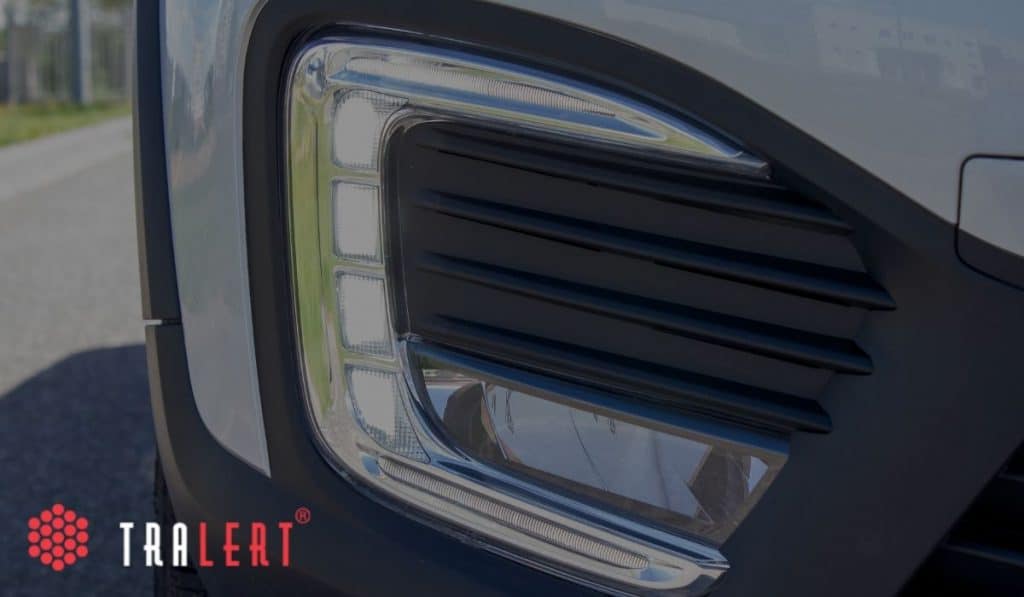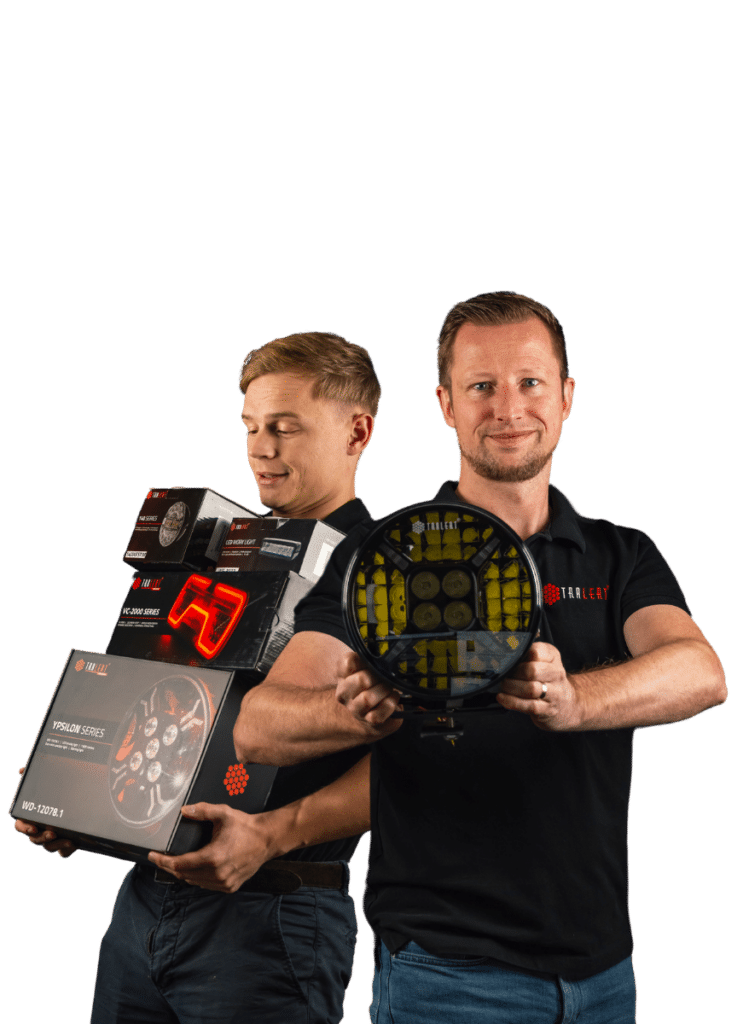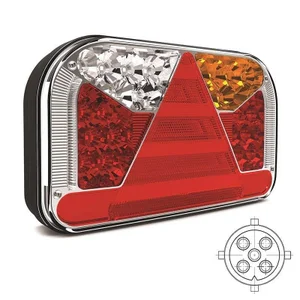Every car or truck produced after 2010 has daytime running lights. But what are these lights? What are the requirements for these daytime running lights? And are daytime running lights mandatory everywhere? We will discuss all this information for you in this blog.
What is the function of daytime running lights?
Daytime running lights are there to make your vehicle more visible. This lighting is actually only used during the day and is only inadequate for use in the dark. You should see it as a sort of 'safety light' or second headlight. Suppose your headlights break down in the dark and you drive with one side lit up, people might think you are a motorbike. This increases the chance of a collision. This can be prevented with your daytime running lights. They are always just bright enough to illuminate the contours of your vehicle. Daytime running lights can be found in almost every vehicle and are based on LED technology.
As LED lights consume little power, the use of daytime running lights will have little effect on the battery. Since 2015, you must also equip your newly purchased car with daytime running lights at the rear. This will allow you to be seen well in dark tunnels, for example.

What are the requirements for daytime running lights?
Now that the function of daytime running lights is clear, let's move on to the requirements for daytime running lights. What are the exact rules and requirements for daytime running lights? Daytime running lights at the front of the car must shine forward. The colour must be white and there must be 2 separate daytime running lights, which are positioned at least 60 cm apart from each other. A different number is not permitted. The daytime running lights must be mounted at least 25 cm and a maximum of 150 cm above the road surface. It is also important that your lights are placed no more than 40 cm from the side of your car. The final requirement for daytime running lights is that they must be on when the ignition is switched on or the engine is running. As soon as the city lights or dipped headlights are used, the daytime running lights must be extinguished.
Are daytime running lights compulsory?
Although more and more cars are equipped with daytime running lights, it is still not compulsory in the Netherlands. If you drive during the day with broken daytime running lights, you will not be fined for this. However, you will be fined if you drive with broken daytime running lights or main beam lights in poor visibility or at night. On the other hand, it is not permitted to use daytime running lights in combination with other lights at the front.
What is the difference between city light, low beam and daytime running lights?
To find out the difference between city light, low beam and daytime running lights, we will first explain what exactly these lights mean.
Driving light
City lights are lights that are switched on when a car is parked in a dark street. These lights are not meant to be used while driving. The light emitted should be white or yellow.
Low beam
Dipped-beam headlamps are lights that must be switched on when visibility is poor, such as in the dark. These are also called the 'standard' lights. These lights make your vehicle more visible and illuminate the road surface better. These lights may not only be used in the dark. These lights may not only be used in the dark, but also in poor visibility during the day. Think of a rainstorm. When you use your front fog lights, you must turn off your dipped headlights. Do you have automatic lights? Then pay close attention during the day. Dipped-beam headlamps will automatically switch on in the dark, while this is not the case during the day. Therefore, when visibility is poor during the day, always check whether your dipped headlights are switched on. Diplights must emit white or yellow light.
Daytime running lights
As previously mentioned, daytime running lights serve to make a vehicle more visible during the day. This improves road safety for you and your fellow road users. Pay attention with daytime running lights. It is not a replacement for dipped headlights and fog lights in poor visibility. Unlike city lights and dipped headlights, daytime running lights can only be white. Daytime running lights are not compulsory on your vehicle but will make your situation safer.
The difference
Conclusion:
- Parking lights should only be used when your car is parked in a dark street
- Dipped beams must be used when visibility is poor, both in the dark and during the day, for example, when it is raining.
- Daytime running lights serve to make your vehicle more visible during the day.
Are sidelights and dipped beams obligatory?
City lights are required at night if your vehicle is parked outside built-up areas or on the roadway. When you are inside the built-up area, it is not required but it is allowed. Low beam lights are always required in the dark. During the day with poor visibility, it is not required but highly recommended. Both city lights and low beam lights must work to pass the MOT. If one is broken, it must be replaced first.
What additional lighting can a car have?
Now that all the issues surrounding daytime running light requirements are clear, let's move on to the other lights on a vehicle. As mentioned earlier in this blog, daytime running lights may not be used at the same time as other lights on the front of your vehicle. But which lights are allowed to be on at the same time? Dipped-beam headlamps or front fog lamps may be lit at the same time as marker lights, roadside lights, cornering lights, directional lights, or city lights.
What lights are on a car?
Over the years, more and more lights have been added to a car. Because of this, it is sometimes difficult to know which lights your car needs and what these lights are actually used for. We have summarised this for you.
Large light
The purpose of the high beam is to illuminate the road surface over a greater distance. This light may only be used when there is no oncoming traffic. If you do, you will blind the oncoming traffic and this can lead to unsafe situations. High beam headlights may be used both inside and outside built-up areas. The colour of the lights must be white or yellow.
LED marker lights
Marker lights are used to make your vehicle more visible in the dark. This lighting allows other road users to better estimate the length and width of your vehicle, helping them anticipate the upcoming situation. The color of the marker lights must emit white, orange, or red. White marker lights are intended for the front of your vehicle. The red marker lights are for the rear of your vehicle, and finally, the orange marker lights are for the side of your vehicle.

Low beam
As mentioned earlier, dipped beam is for poor visibility during the day or dark situations. Dipped-beam headlights are also called the 'standard' light. The colour that the lights must emit is white or yellow.
Fog lights
fog lights on your vehicle should only be used when there is fog, snow, or rain severely obstructing your vision. It's important to note that visibility must be less than 50 meters. Rear fog lights can be used when visibility is less than 200 meters due to fog or snowfall. However, you should not use the rear fog light in heavy rain. Rear fog lights should emit a red light at the back of your car, while the front fog lights should be white or yellow.
Daytime running lights
Daytime running lights are, as mentioned before, for making your car more visible during the day. This improves road safety because other road users can see you better. Daytime running lights should have a white appearance. Daytime running lights are not compulsory in the Netherlands. Daytime running lights are compulsory in other countries, so pay attention to this.
Rear lights
Rear lights are designed to alert following traffic to the presence of your vehicle. This lighting should always be on together with high beam, low beam, parking lights, or fog lights. Rear lights should be red in color.
LED licence plate lighting
The term license plate lighting says it all – lighting for your license plate. This ensures that your license plate remains clearly visible at all times. License plate lighting should always be on together with high beam, low beam, parking lights, or fog lights. The color of license plate lighting is not specified, but it should be between warm white and cool white. This is because colors can discolor the license plate, which is not the intention.
Driving light
Another word for city lights is parking light. This lighting is for your parked vehicle. In this way, it is always easy to see and the situation becomes safer in the dark. The colour that the lights must emit is white or yellow.
(Third) brake light
The brake light serves to alert your fellow road users that you are reducing speed. Was your car put into use after September 30, 2001? Then it is mandatory to have a third brake light. The third brake light must be positioned in the center and at the top of your car. The color of the brake lights must emit red or amber.
Flashing light
Flashing lights are used to draw the attention of other road users to the fact that you are about to change direction or make a sideways movement. The colour of the flashing lights may not be different from amber or red.
Reversing lights
Reverse lights are used to alert other road users that you are reversing or about to reverse. The color that the lights must emit is white or yellow.
Featured product V10C6-541B5, LED compact rear light with licence plate illumination The V10C6 series is the perfect compact rear light for your trailer. This light contains all the lighting you need. With a lavaflow look, the product has extra fog and licence plate lighting on the side. The lavaflow is also the daytime running light.


